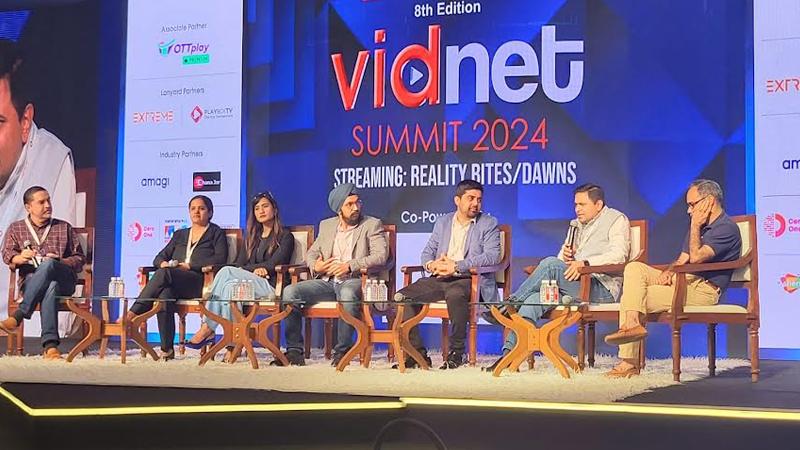Mumbai: The OTT business in India is buzzing with new streamers, niche, and language offerings. However, early players are struggling as heavy content spending isn't matching revenues, and India-specific low pricing hasn't spurred subscriptions. Growth has plateaued as consumers return to post-COVID normalcy, preferring to binge occasionally.
Adding to the churn is the shift towards AVOD by giants like JioCinema, offering premium events like cricket for free, with Disney+Hotstar following suit. This has strained streaming bottom lines. The rise of FAST channels is also causing industry jitters. Vidnet explores the future of the streaming ecosystem. This event was held on 19 July 2024, at Hotel Sahara Star, Mumbai.
This panel discussed innovative advertising avenues beyond ad-supported video-on-demand (AVOD) platforms and how businesses could seize those new opportunities to reach their target audience effectively.
The session was chaired by Kurate Digital Consulting's founding partner Uday Sodhi. It included the following panellists: Amazon minitv business head & director Aruna Daryanani, Sony LIV, SPNI Sr. vice president & head of ad revenue Ranjana Mangla, Zee5, South Asia chief revenue officer Gaurav Kanwal, Marico head - media, digital marketing and Brand PR (India and Global COE) Ankit Desai, CereOne director Deepak Karnani, PubMatic senior director - customer success Harguneet Singh.
The discussion highlighted key industry trends and perspectives on content consumption and advertising priorities. Ranjana Mangla emphasized that different video genres cater to diverse audiences, with broad appeal achieved by shows like KBC or Indian Idol, while most content targets specific niches. Understanding the addressable market and tailoring content and sponsorship strategies to meet specific goals is crucial for advertisers.
Gaurav Kanwal pointed out that the persistent issue of trust in digital advertising necessitates a shift from efficiency to effectiveness in media planning. Advertisers should focus on outcome-based strategies and leverage data to address specific challenges and metrics, making campaigns more relevant.
Harguneet Singh noted that advertisers are primarily focused on acquiring cost-effective impressions to maximize reach and frequency. Targeting strategies can vary from geo-specific to audience segments based on advertiser behaviour.
Anand Makhija discussed the common comparison of YouTube's rates with other platforms, highlighting that CPMs are often higher elsewhere. It is important to communicate the additional benefits of different platforms. The growth of connected and smart TVs is driving the industry towards hybrid models (combining AVOD and SVOD), which help transition users and enhance platform engagement.
Aruna Daryanani shared that as publishers, we will need to meet the diverse needs of advertisers. There is no one-size fits all approach here and all media plans need to be customised based on objectives. The new brands are looking to build upper-funnel awareness, whereas the established brands are looking to build saliency and mid to lower-funnel impact. Given Amazon miniTV is tightly integrated with Amazon, advertisers benefit from Amazon’s rich content and shopping insights.
Ankit Desai highlighted that advertisers are investing significantly in video platforms, with 50-60 per cent of their budgets allocated to video advertising, and some up to 80 per cent. Despite YouTube's classification as short-form content, consumers perceive all video content similarly, blurring the lines between digital video and OTT platforms.
 Follow Us
Follow Us





